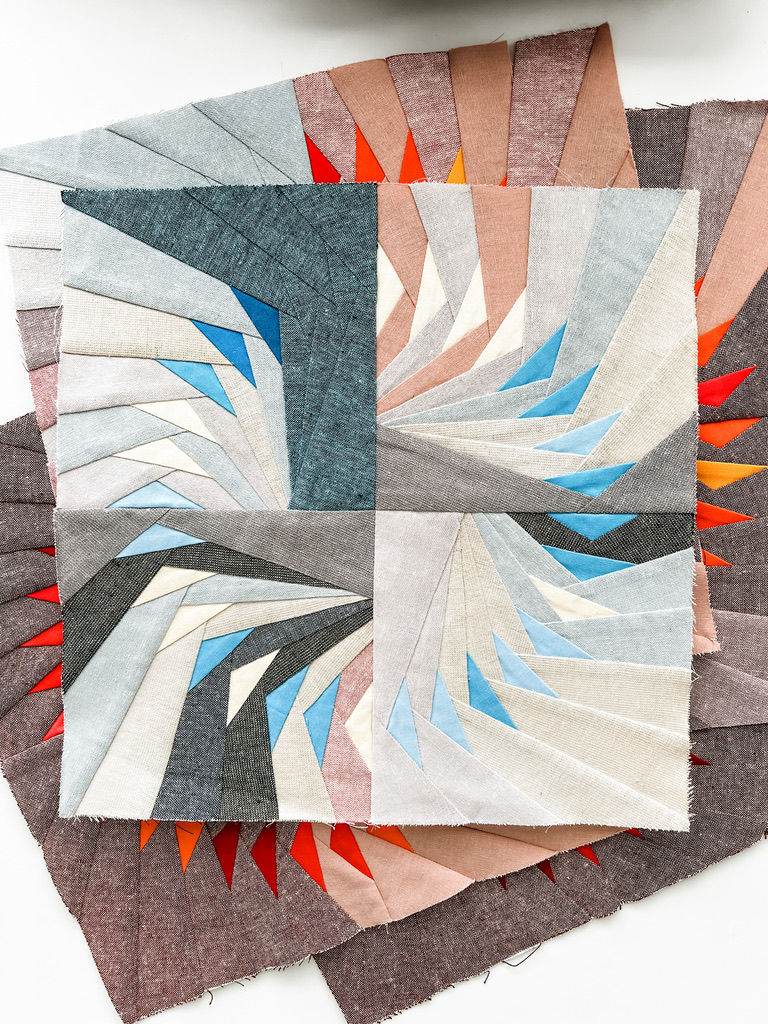Understanding the Scant 1/4" Seam
- Julie Robertson

- May 22
- 2 min read
Let's cut to the chase: A scant 1/4" seam allowance is slightly narrower than a standard 1/4" seam. It's used for two reasons:
It's used in piecing and quilting to compensate for the fabric loss when seams are folded and stitched, ensuring accurate overall dimensions for your projects. This is especially important when sewing with heavier weight fabrics and threads.
It's used where economical fabric cutting and sewing techniques are used that don't accommodate a whole 1/4" seam.
In Sublime Stitchery patterns, I use fabric-saving techniques to create Half-Square Triangles (HST's) and Flying Geese. The technique I use for sewing HST's calls for a SCANT 1/4" seam. I do this because I don't want to require cutting unusual-sized fabric pieces—like 3 3/8's—and at the same time, I don't want to waste fabric by trimming down HST units more than I think is economical. So I call for sensibly sized fabric cuts and use a SCANT 1/4" seam to ensure the final HST unit size can be achieved without too much waste.
I only call for a SCANT 1/4" seam where a unit is going to be trimmed to the correct size, and I don't call for a SCANT 1/4" seam when piecing units. All that to say - I don’t call for a SCANT 1/4” seam where its dimension is critical.
Sewing a Scant Quarter Inch Seam
Here are a few tips to achieve a Scant 1/4" seam:
1. Understanding Scant 1/4":
A scant 1/4" seam is just a tiny bit smaller than 1/4". I aim for halfway between 1/4" and 3/8".
2. Methods for Sewing a Scant 1/4" Seam:
Using a 1/4" Presser Foot:
A 1/4" foot has a guide that helps you sew a 1/4" seam. You could adjust your needle position slightly to achieve the scant seam or adjust the position of your fabric under your presser foot.
Adjusting Needle Position:
Many sewing machines have the ability to move the needle to the left or right.
You could move your needle slightly to the right of the centre position to achieve a scant 1/4" seam.
Using a Magnetic Seam Guide:
A magnetic seam guide could be used to guide your fabric as you sew.
Place the guide next to the fabric, adjusting it to achieve a scant seam.
3. Testing Your Scant 1/4" Seam:
Test Squares:
Sew a test block using your chosen method to ensure that you can achieve the required block size. Fabric weight, thread weight, pressing and seam allowance will all play a role in achieving the desired block size.
Cut [4] 2 1/2" squares, sampling the fabric you are going to sew with. Sew, press and measure the finished square sizes. Ideally, the finished dimension between seams is 2".
Measure and Adjust:
If the sewn units or blocks are too small (which indicates that your seam allowance is too wide), adjust the needle position or seam guide to make the seam allowance slightly smaller or more scant. If your sewn units or blocks are too large (indicating that your seam is too narrow), make the seam allowance slightly larger.
Happy sewing!
Julie








Comments